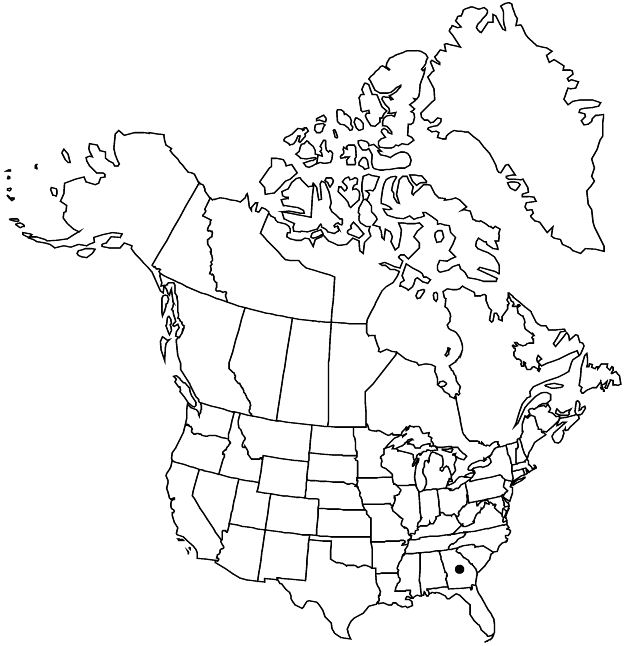Difference between revisions of "Deutzia parviflora"
Enum. Pl. China Bor., 31. 1833.
FNA>Volume Importer |
imported>Volume Importer |
||
| (5 intermediate revisions by 2 users not shown) | |||
| Line 27: | Line 27: | ||
|elevation=100–200 m. | |elevation=100–200 m. | ||
|distribution=Ga.;Asia (n China;Korea). | |distribution=Ga.;Asia (n China;Korea). | ||
| + | |introduced=true | ||
|discussion=<p><i>Deutzia</i> ×lemoinei Lemoine, the hybrid between <i>D. parviflora</i> and <i>D. gracilis</i>, often has been grown in the flora area and is considered one of the hardiest cultivars (A. J. Rehder 1940; M. A. Dirr 1998). Three varieties of <i>D. parviflora</i> are recognized in China; plants in the flora area seem closest to <i></i>var.<i> parviflora</i>.</p> | |discussion=<p><i>Deutzia</i> ×lemoinei Lemoine, the hybrid between <i>D. parviflora</i> and <i>D. gracilis</i>, often has been grown in the flora area and is considered one of the hardiest cultivars (A. J. Rehder 1940; M. A. Dirr 1998). Three varieties of <i>D. parviflora</i> are recognized in China; plants in the flora area seem closest to <i></i>var.<i> parviflora</i>.</p> | ||
|tables= | |tables= | ||
| Line 36: | Line 37: | ||
-->{{#Taxon: | -->{{#Taxon: | ||
name=Deutzia parviflora | name=Deutzia parviflora | ||
| − | |||
|authority=Bunge | |authority=Bunge | ||
|rank=species | |rank=species | ||
| Line 52: | Line 52: | ||
|publication year=1833 | |publication year=1833 | ||
|special status=Introduced | |special status=Introduced | ||
| − | |source xml=https:// | + | |source xml=https://bitbucket.org/aafc-mbb/fna-data-curation/src/2e0870ddd59836b60bcf96646a41e87ea5a5943a/coarse_grained_fna_xml/V12/V12_794.xml |
|genus=Deutzia | |genus=Deutzia | ||
|species=Deutzia parviflora | |species=Deutzia parviflora | ||
Latest revision as of 20:17, 5 November 2020
Shrubs 10–20 dm. Branches ascending to erect. Leaves: petiole 2–8 mm, glabrous; blade ovate or elliptic to ovate-lanceolate, 30–90 × 20–40(–50) mm, base cuneate or rounded, margins serrulate, apex acute to acuminate, abaxial surface green, glabrous or stellate-pubescent, trichomes 6–9-rayed, adaxial green, glabrous or stellate-pubescent, trichomes 3–5-rayed. Inflorescences corymbose cymes, open, 10–60-flowered, 5–10 × 4–7 cm, glabrous; peduncle 20–80 mm, villous or stellate-pubescent. Pedicels 10–15 mm, stellate-pubescent. Flowers faintly fragrant, 9–10 mm; hypanthium ovoid, 2.2–3 × 1–1.3 mm, densely stellate-pubescent; sepals ovate-deltate or broadly ovate, 0.9–1.2 × 0.3–0.4 mm, apex obtuse, surfaces densely stellate-pubescent; petals imbricate, white to pink, broadly ovate or suborbiculate, 2–7 × 3–5 mm, stellate-pubescent; filaments terete, filiform, outer 4–5 mm, apex not lobed, inner 3–4 mm, apex 2-lobed; styles 3, 2–3 mm. Capsules hemispheric, 2–3 × 2–3 mm. Seeds 0.9–1.3 mm. 2n = 26, 78 (Asia).
Phenology: Flowering Apr–Jun.
Habitat: Disturbed areas, moist ravines.
Elevation: 100–200 m.
Distribution

Introduced; Ga., Asia (n China, Korea).
Discussion
Deutzia ×lemoinei Lemoine, the hybrid between D. parviflora and D. gracilis, often has been grown in the flora area and is considered one of the hardiest cultivars (A. J. Rehder 1940; M. A. Dirr 1998). Three varieties of D. parviflora are recognized in China; plants in the flora area seem closest to var. parviflora.
Selected References
None.